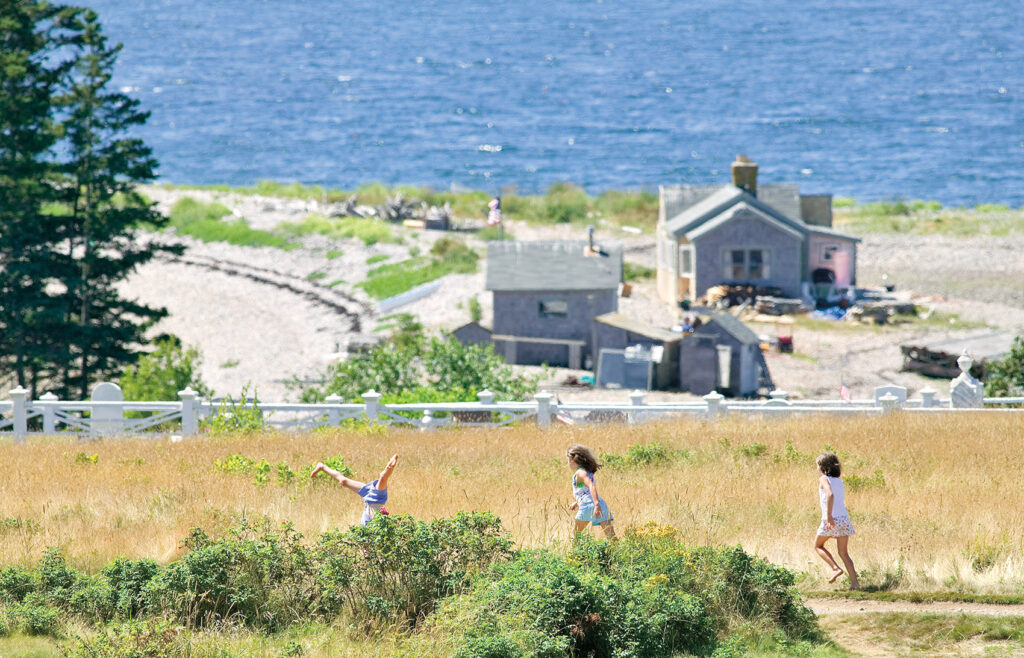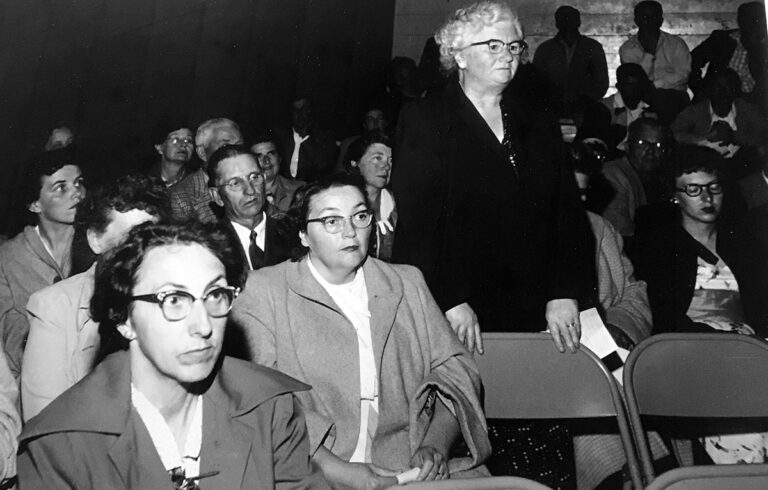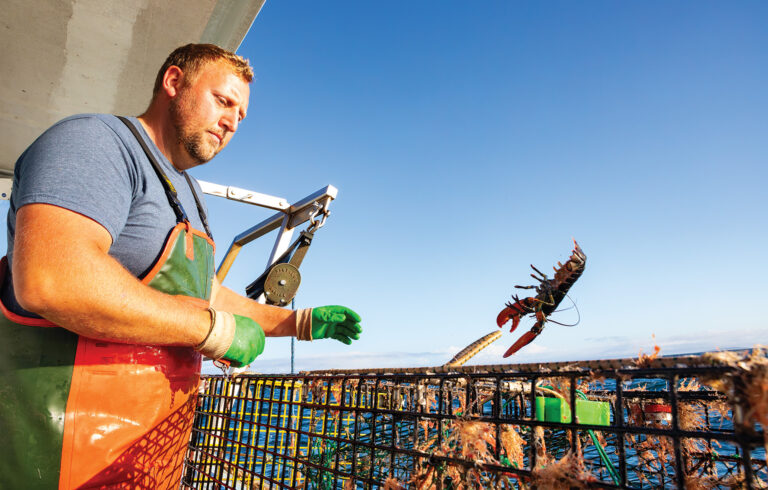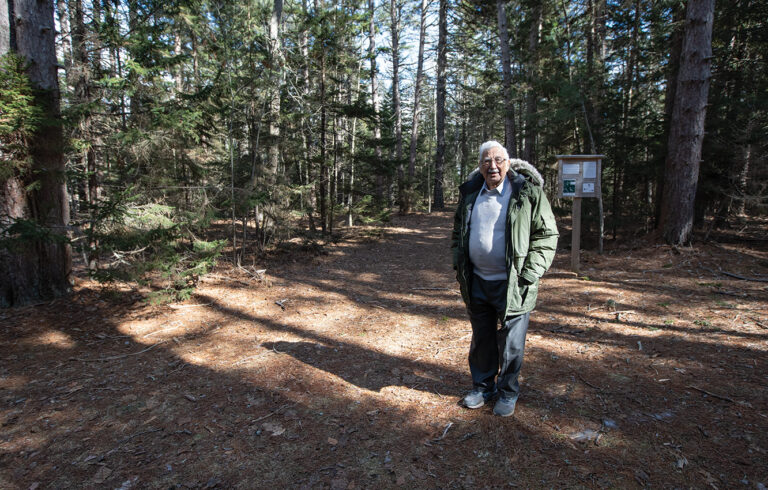
The ledges path leads from my back field in a southeasterly direction toward the sea. On a small island in Maine, all paths lead ultimately to the sea. This one cuts through a spruce forest where deep mosses fill in the spaces between old trees that are falling away; it passes by clumps of new young trees, thick and vigorous with early growth. But when it arrives at the ledges that rise up in the island’s interior, it is interrupted by a rectangular cut in the granite. This is not a “natural” feature. It is a place where stone has been removed, and it marks what would have been called, in local parlance, a “motion.”
We do not think of stone as endowed with freedom of movement. Place is supposed to stay put; the rock which once occupied this place on the ledges path could only have been purposefully moved by a human hand to serve some particular purpose.
It may have become one of the rectangular granite blocks that form the foundation of our house. Or perhaps it was transformed into our now-worn and lopsided front doorstep. There is a story here, but it is almost 150 years old and has faded into the past. What is real is the space that remains, the place where the non-present seems eerily present: an invisible force.
But rock, we know, does move. Motion thus suggests to the imagination the slow movement, over millennia, of the bedrock of the island. As New England farmers know, the rock pushes up from below. It is a slow and relentless movement. Its pace and rhythm are far different from that of the nearby sea.
Movement on the land is the object of archaeology and history; land-based knowledge is framed in linear time. But on the small island where I am a summer resident, where the sea is ever present, other stories present themselves, stories we experience less in linear trajectory than in the repeated motion of the tides.
On an island, a place of edges, the ocean provides a counter-narrative, nonlinear in what it reveals; “time’s arrow” is modified by the rhythmic cycle of the sea as it encounters, and ever transforms, the shore. Historical, archaeological, or even narrative knowledge is challenged by its meeting with the sea that offers up its own kind of knowing. We need to stretch, even confound, our usual frames to take account of such knowledge.
“Loss is the story about what happens next.” The words are not mine. I borrow them from writer Barbara Hurd, who used them as she walked the place where a receding tide had left a “line” of shells, pebbles, and other fragments of detritus from the sea. A wrack line marks a tide that has gone out, but tells us at the same time that although it’s ever changing, it will return.
Like Hurd, I am interested in disappearance and return (“what comes next”), a process wherein loss remains not so much a static emptiness as a precursor of movement. A shore, an edge, is a place in motion.
I know about loss, and having spent all the summers of my adult life as a resident on this small island in Maine, I know about edges.The goal is to privilege, not fixity and stasis, but movement—a story, a narrative that goes on, ever changing, from past, to present, and beyond.
On a small island that is continually subject to the movement of the ocean, whose ostensible borders are constantly in motion, what always happens next is another tide. The rhythm and constant motion of the tide determine life on the island—in a sense, part of life itself.
Poet Elizabeth Bishop alluded to such movement in “North Haven,” where, eulogizing fellow poet Robert Lowell—like Bishop, a sometime summer island resident—she noted that with the death of her friend she can now only “pretend” that the island has “shifted since last summer,” and is now “drifting . . . a little north, a little south.”
In the face of Lowell’s death, North Haven Island may appear to be “afloat in mystic blue,” but remains nonetheless “anchored in its rock.” For Lowell, and for the island, there can be no more real change or “rearrangement.” Motion, like poetry making, has stopped. The rocky edge of North Haven is firm: a discreet edge.
But for the living, change and motion are still in play: We move along a path or old trail, we explore the place we know, we move in and out of time—historical and current time conflate—we experience an edge that is not an end. For islands and their paths do not have “ends “in the usual sense; each supposed end is also a beginning, each edge determined by a constantly moving tide.
* * *
More than two decades since the sudden death of my younger son, I am drawn to what happens next. Loss, though never entirely absent from consciousness, changes.
End points and borders are more porous than firm. My son is buried in the old island cemetery, itself islanded by its white wooden fence. But the fence proved impermanent. When it rotted out in the summer of 2012 and had to be replaced, it was unthinkable that the graves, some dating to the late 18th century, stand in unbounded ground. Even if they are ultimately fictions, we need our boundaries.
With volunteer labor, a new fence, somewhat changed in design, was put in place exactly where the old one had been. But just like the old fence, the new one does not necessarily demarcate an end point. Photographer Peter Ralston, a valued friend of the island, got it right when he depicted in a stunning image of the cemetery not so much the fixity of death as its connection with life. In his photograph, three young girls turn somersaults in the field in front of the cemetery fence. And as always, beyond the sharp focus of the photograph, lies the ocean, moving and shimmering in bright sunlight.
The ways we perceive, experience, create, and remember place are infinite. With the line between land and sea ever fluctuating, old metaphors of isolation and “insularity,” whether of a small land mass or of self, are inadequate. The island concentrates, or even distills, experience, but it offers long vistas as well.
We can locate images from memory in specific places. We can transpose a mental map onto a topographically defined location. But lived experience is never simply frozen or memorialized in a place that is itself moving and changing, both embraced by and embracing the sea. A small island, though apparently girded by its granite belt, is not necessarily contained, either in time or in space.
I know these things because I live them.




